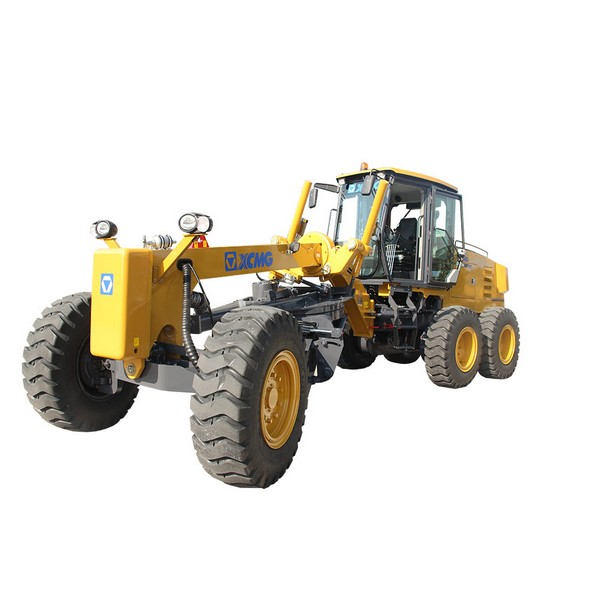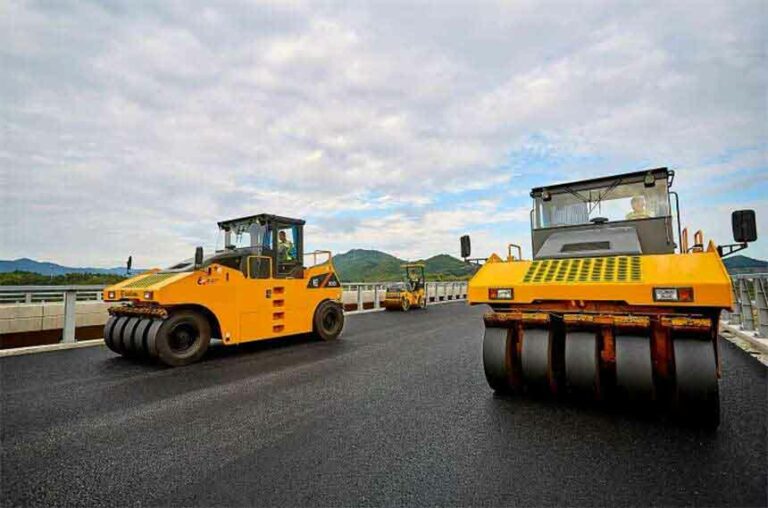How to maintain a motor grader?

How to maintain the motor grader, you need to pay attention to the following aspects:
The performance requirements of the grader on the hydraulic oil
In hydraulic transmission, hydraulic oil is not only a medium for transmitting power, but also a lubricant, and it also plays a sealing role in some components. The heat in the system is also diffused through the oil, so it also plays a role in heat dissipation. Therefore, to ensure the reliable, effective, and economical operation of the hydraulic system, the hydraulic oil must ensure the following requirements:
Appropriate viscosity
Viscosity is the amount of frictional resistance between molecules when the oil flows. When the viscosity is too large, the resistance of the oil flow is large, the energy loss is large, and the system efficiency is reduced. In addition, the no-load loss of the main engine increases, the temperature rises rapidly and the working temperature is high, and the phenomenon of “cavity” is easy to appears at the oil suction end of the main pump. If the viscosity is too small, the good lubrication conditions of the hydraulic components cannot be guaranteed, the wear of the components will be aggravated, the leakage will increase, and the efficiency of the hydraulic system will also be reduced.
Good viscosity-temperature characteristics
The viscosity-temperature characteristic refers to the degree to which the viscosity of the oil changes with temperature, which is usually expressed by the viscosity index. The larger the viscosity index, the smaller the drop in oil viscosity with the increase of temperature during the operation of the hydraulic system, so that the internal leakage of the hydraulic system will not be too large. The viscosity index should generally not be lower than 90.
Good anti-wear and lubricity
The purpose is to reduce mechanical friction and ensure sufficient oil film strength under different pressure, speed, and temperature conditions.
High chemical reaction stability, not easy to oxidize and deteriorate
The practice has proved that for every 10 ℃ increase in oil temperature, the chemical reaction rate is about doubled. Hydraulic oil with good oxidation resistance and stability is not easy to oxidize and deteriorate after long-term use, which can ensure the normal circulation of hydraulic oil.
The quality should be pure, and the content of mechanical impurities, moisture and dust should be minimized
The influence on the seal is small
Good demulsibility and not easy to cause foam.
Emulsification resistance refers to the ability of the oil to be mixed with water and not become an emulsion after agitation, and the water can be separated from it. Anti-foaming refers to the ability of the oil to be mixed with air and stirred without forming an emulsion and the ability of the air bubbles to separate from the oil. After mixing with water or air, the volume modulus of the hydraulic oil is reduced, the compressibility is increased, the hydraulic components move slowly, and are prone to shock and vibration.
Good anti-rust performance
Hydraulic oil covers the surface of the parts to prevent them from being oxidized and rusted.
Good shear resistance stability
To improve the viscosity index of the oil, high molecular polymers such as polymethacrylate and polyisobutylene are often added to the oil. The molecular chains of these substances are long, and the oil will be greatly sheared when it flows through the slits of the hydraulic components. The effect will often cause molecular chain scission, and the viscosity-temperature characteristics of the oil will decrease.
The ignition point and flash point should meet the ambient temperature, and the volatility should be small to ensure the safety of hydraulic oil
Causes and hazards of hydraulic oil pollution
Sources of pollutants
- Contaminants in new oil. Although the hydraulic oil is refined and processed in a relatively clean environment, it is polluted by pipelines, oil drums, and oil storage tanks during transportation and storage, and some dust, sand, rust, etc. will be mixed into the oil. Moisture and other liquids, etc.
- Contaminants remaining in components and systems. Hydraulic components and hydraulic systems can leave some contamination during processing, assembly, and cleaning due to incomplete cleaning.
- External intrusion of pollutants. In the process of hydraulic components and mechanical work, due to the imperfect sealing of the fuel tank, the damage to component sealing and protective devices, etc., some pollutants, such as dust, sand, moisture, etc., are invaded from the outside of the system.
- Contaminants generated inside the hydraulic system. The hydraulic system itself will generate some solid particulate pollutants during operation, including metal particles or rubber powder generated by wear and corrosion of hydraulic components, and pollutants generated by oil oxidation.
Hazards of hydraulic oil pollution
- The contaminants often block the throttle valve and the pressure damping hole from time to time, and even jam the valve core, causing the working pressure and speed of the hydraulic system to change from time to time, affecting its normal operation.
- Accelerate the wear of the hydraulic pump, motor, and valve group, increasing the amount of internal leakage.
- The water mixed in the hydraulic oil corrodes the metal and accelerates the aging and deterioration of the hydraulic oil.
- The air mixed into the hydraulic oil will cause noise, vibration, creeping, cavitation and impact, thus deteriorating the working performance of the hydraulic system.
Maintenance of grader hydraulic oil
Prevent the contamination of engine oil on the ground Among the various pumps and valve components used in the motor grader, the matching clearance between the relative moving parts and the working surface is small, and there are many damping holes and gap-type control valve ports in the hydraulic components. If the material is blocked, the blockage will occur, and even scratch the mating surface, increase leakage, or even jam the valve core, causing the component to malfunction. Therefore, keeping the oil clean is the key to the maintenance of the hydraulic system.
- Hydraulic oil must be strictly filtered. When filling oil into the hydraulic oil tank, it should pass through an oil filter with a mesh size of 120 or more.
- Regularly check the cleanliness of the oil, and replace it regularly according to the working conditions. When replacing, it is necessary to discharge about 40L of the oil in the hydraulic system as much as possible. Among them, the method of using the external circulation of the system is more operable. The method is to first drain the waste oil in the fuel tank and radiator, and then add new oil. Remove the oil return pipe that enters the fuel tank, start the engine, and let the waste oil flow completely out of the oil return pipe. It is particularly emphasized that the oil level change in the fuel tank should be observed in time, and the safe height of the oil level should be guaranteed. When changing to new oil, the filter element of the filter should be replaced at the same time.
- Hydraulic components should not be easily disassembled. If they must be disassembled, they should be cleaned with kerosene or diesel and placed in a clean place to avoid mixing impurities during reassembly.






